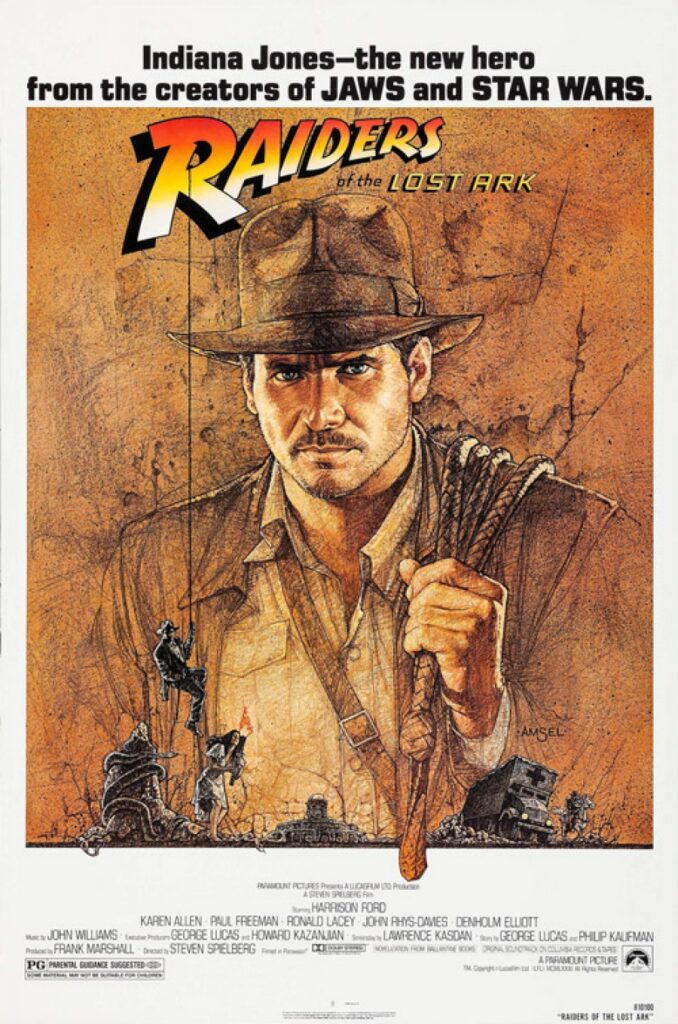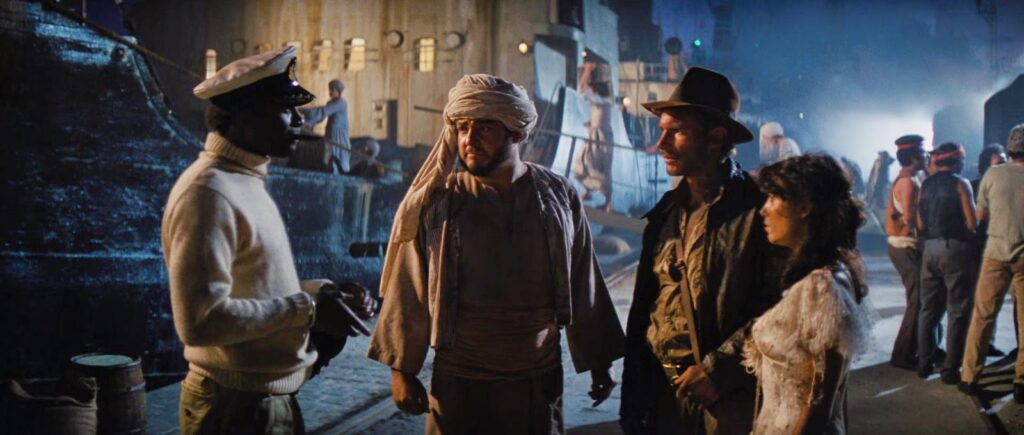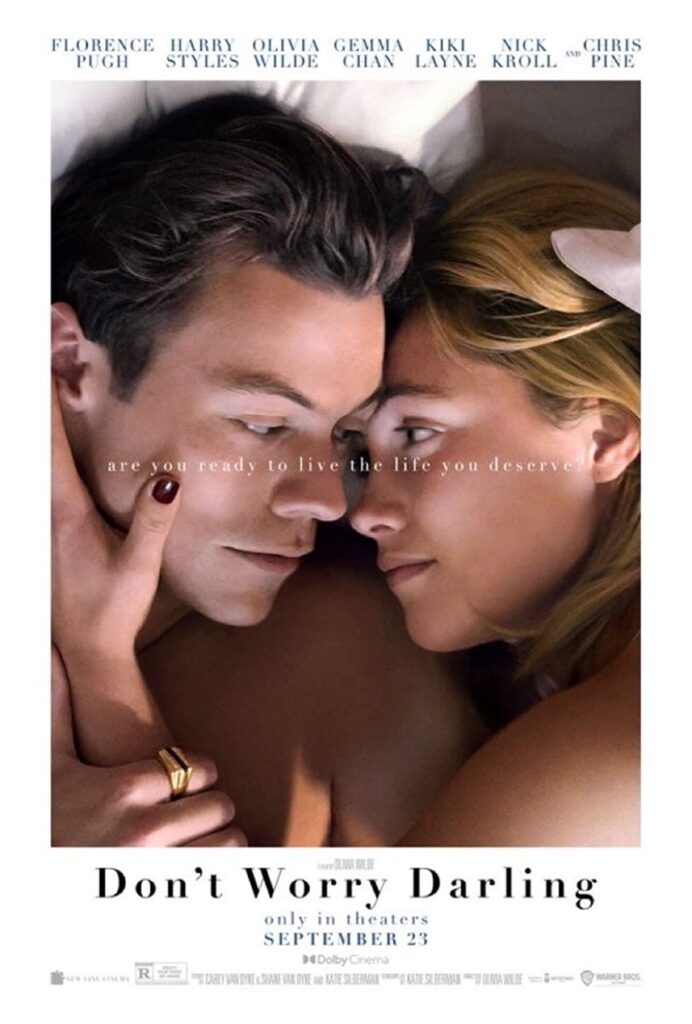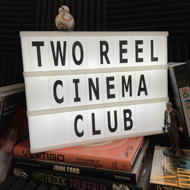French actor Adèle Haenel, best known for Portrait of a Woman on Fire, published an incredible letter about her retirement from the film industry a couple of weeks ago. This episode at the Popcorn Counter we read the letter and talk about some of the issues she raises. What are our responsibilities as writers and as consumers of cinema? What is the right way to respond to news of sexual assaults and the abuse of power? And what can we do to effect progress? Some heavy subject matter this time round, and neither of us feels like we have the answers, but it’s good to talk.
Episode 62: Beau is Afraid vs Forrest Gump: Life is Like a Box of Terror
We’re still trying to recover from the trauma of watching Beau Is Afraid for this episode. Ari Aster’s new Freudian ‘comedy’ horror movie feels like a three hour nightmare that left us begging to wake up. Happily, we’re comparing it to Tom Hanks’ 1994 Oscar winner Forrest Gump, which is just the right film to cleanse our tainted, rancid, bloody palates. These two have so much in common that one is like a ‘dark dimension’ mirror image of the other. But which movie features the most running? Which movie says more about the state of America? And which movie draws from the David Lynch playbook?
We also hail the invention of ‘elastic thinking’, visit Iñárritu’s new homage to Fellini, rewatch a low budget time travel romp, and give a lesson on how to fit a burro in a station wagon. Plus Tom Hanks. Did we mention Tom Hanks? Tom Hanks’ name comes up in this podcast. Many times.
Episode 61: Popcorn Counter: Inner City Blues
Welcome to the ‘urban planning’ section of the podcast, as we meet at the popcorn counter this week and talk about why the inner city gets such a bad rep in cinema. Who is London’s most famous inner city resident? What does ‘NF’ stand for in the world of Shane Meadow’s ‘This is England’? And why should ‘Boyz N The Hood’ be remade as ‘Boyz N The Garden’?
Raiders of the Lost Ark (1981): Eye patches and fruit waving

So we had a family trip to DisneyWorld in Florida last month, something I had been mentally planning since my daughter was born fifteen years ago. And then last weekend we reached another milestone, with a different event I’ve been thinking about on and off for at least as long: our first family viewing of ‘Raiders of the Lost Ark’.
‘It’s probably the greatest action adventure movie ever made,’ I told the children before we watched it.
‘That was the most racist movie I’ve ever seen,’ my daughter told me afterwards.
Ah.
So, okay, I do think the movie is still great. It’s a textbook of action adventure film making. It features so many set pieces that have become part of the cultural fabric: the giant ball, the golden statue, the hijacking of the truck, the submarine, the taxi-ing aeroplane fight.
But the set pieces wouldn’t have endured if they featured characters we didn’t want to watch. And what a great character Indy is. He’s 25% hero, 75% regular guy. He’s clever and resourceful and brave, yes, but he’s no superhero, and he has neither the super-competence nor the bulked up musculature that we see in, say, most of the Marvel leads.
Instead, he’s often an asshole. He leaves Marion tied up. He puts his intellectual curiosity before the safety of everyone he meets. He’s naive, believing the US government will let him keep the Ark when Denholm Elliot is much more realistic. He’s arrogant, he’s over confident, he fails to plan, the list goes on.
But because he’s constantly messing up, he’s exciting to watch. He can barely jump the gap as the tomb door closes. He underestimates the weight of the statue and then runs off with poison darts flying. He’s far outclassed by most of the people he fights, having to cheat by bringing a gun to a sword fight or waiting for his assailant to get hit by a spinning propeller. We love the film because we love Indy. And we love Indy because we see something of our own, flawed-but-trying-hard selves in him.
However, yes, the film is pretty racist. I’m sorry. Brown people are essentially props here, with no agency and no value beyond waving fruit or guns as the story requires, or wearing eye patches and being dastardly. And they always seem to be delighted to help white people steal their cultural artefacts. The film is an affectionate pastiche of 1930s serials, so maybe one could charitably suggest it is aping the attitudes of its source material as part of its homage. (And Captain Katanga is an interesting enough character that I came away surprised he hasn’t had his own spin off movie.) But overall, oof, my daughter is right and the movie has got this aspect of the story wrong.

It does at least hate Nazis, though. It’s unambiguous. There’s no ‘both-sides’-ing, no ‘good’ Nazi character, no ambivalent ‘some of them were all right’ shrug. Nope, ‘Raiders’ knows Nazis were bad. So let’s celebrate that much.
I didn’t realise until recently that the film had its name changed in 1999. It’s now officially called ‘Indiana Jones and the Raiders of the Lost Ark’. Supposedly to fit in with the names of the other films in the series. What the name change really illustrates is one of the central tenets of writing for the screen. One of the tenets of fiction overall. The film endures because of Indy more than because of the Raiding. As always, it’s all about the characters.
Episode 60: The Substitute vs La Classe: A Tale of Two Teachers
We return to school again this episode, spending a semester with new Argentine Netflix feature The Substitute, before graduating to a course with 2008 Palme d’Or-winning French drama La Classe. Both films examine the challenges of inner city schooling, but while The Substitute makes teaching look like a Sicario spin off, La Classe is more realistic and subtle. Which film sees two teachers sneak off at lunchtime for a little afternoon delight? Which film shows that there isn’t much of a difference between the staff and the pupils? And which film features a kid rapping? Yes, rapping. Is that what lessons are like these days? Must be some kind of inner city school thing.
Plus a strange James Corden film that might have been a fever dream, a revisit of the greatest action adventure movie of all time, a revelation about the difference between American and British schools, and a merger announcement from this episode’s sponsors. Plus we enjoy some novel mathematical nomenclature and a Venn diagram. Every day is a school day, isn’t it?
Episode 59: Popcorn Counter: Young, Queer and in Love
Listen to us get completely out of our depth in tonight’s episode, discussing our encounters with LGBTQ cinema over the years, and its role in advancing social change. Which is our favourite date movie? Who is the Countess von Bismark? Where does Al Pacino fit in? And what happens when you write the words ‘there is a song and dance number’ in a script?
Episode 58: Close vs Boys Don’t Cry: Close Boys
(Let’s start with a content warning, as this episode’s films contain scenes of extreme violence, self harm and suicide.) If you’re happy to continue, join us as we watch two films about the many forms of love this time: new Belgian drama Close and 1999’s classic Boys Don’t Cry. They form a great double bill, outstanding, beautiful, moving, absorbing, tragic and transformative. But which film reminds us vividly of our ‘happy place’? And which film feels so contemporary it’s a shock when one of the characters uses a landline phone?
You can also hear us fail to remember the name of Nic Cage’s best film, try to figure out what ‘Benelux’ means, and discuss the difference between ‘hot potatoes’ and ‘living in each other’s pockets’. Plus a quick look at a classical music movie, a thumbs down for the Spielberg biopic, a laugh with a robotic doll assassin, and a brief word from our sponsor – although we’re not sure if what they’re saying is an ad or a warning….
Episode 57: Popcorn Counter: VHS
Join us as we hide in a little bubble of nostalgia at the popcorn counter this week. Before AI and chatbots, before Netflix and YouTube, before dvd, there was VHS. We explain why we think those chunky cassettes might possibly have been the most important thing to happen to cinema ever, both for film viewers and for film makers. So what if you spent half your evening adjusting the tracking and then had to watch the movie through a fog of static that would get even blurrier just before the good bit? It was ANALOG. You can’t beat that. ANALOG. Do you hear? ANALOG!
Don’t Worry Darling (2022): A Lesson in Tailoring

To make a good suit, a classic 1950s suit, the kind of suit that James Mason or Cary Grant might wear, requires twenty three different pieces of fabric. The material is very important, and the accuracy of the measurements and the precision of the cuts is essential. But even if the elements are perfect they won’t make a great suit unless they are stitched together just right.
And that, I think, is the problem with Don’t Worry Darling. Many great pieces of fabric that haven’t quite been sewn together into the suit they deserve.
Florence Pugh is Alice, a 1950s housewife living with her husband Jack (Harry Styles) in an isolated desert community where the women cook and clean and gossip and the men drive off everyday to a secret facility lead by Frank (Chris Pine), to do work that no one will talk about. Are they making ‘innovative materials’ as they claim, or is it weapons or maybe mind-control machines? After she sees one of the other wives apparently commit suicide, Alice’s ‘perfect’ life starts to unravel, amid strange hallucinations and possible flashbacks to a different life altogether. What is real, what is illusory, and what is going on?
Pugh is fantastic at the centre of the picture, ably supported by Styles who gives a performance far better than the lukewarm reception he seemed to get at the time of the film’s release would suggest, and Pine – not an actor I generally warm to – gives maybe a career-best turn as a cult leader dressed as a CEO.
So with all those great elements, why doesn’t the film quite work?
It’s a screenwriting truism that directors are interested in scenes while screenwriters are interested in stories, and this film seems to me to be a terrific example of this conflict. Because there are many outstanding scenes in this film. Many. Eerie, foreboding, romantic, tragic. Director Olivia Wilde has created many wonderful scenes with a beautifully balanced cocktail of acting, soundtrack and especially cinematography – this film looks fabulous. There’s a real ‘The Prisoner’ goes to Nevada vibe here.
But all these great scenes just don’t quite gel into a coherent whole. It is a director’s film and not a writer’s one. The story resets too many times – we see something weird happen but then Alice is okay, again and again. Plot threads are established then abandoned – what happened with the plane? Who are the bus driver and the medical staff, are they simulations or real people? And the world building is patchy, with some essential rules only explained at the last minute, or not explained at all – how does death work in this place? Who knows what’s happening and who doesn’t? Is Frank’s wife a pawn in the whole endeavour, or is she a grand master? The building blocks are good but the issues are with the thread that holds them together.
The result of this haphazard sewing is to leave the viewer with a poorly fitting suit made of the very finest fabric. Beautiful in closeup, yes, and stylish in many parts, but ultimately too tight here, too loose there, too baggy all over and eventually tripping you up when you try to climb the stairs. With just a firmer grasp on the big arcs of the story, it could have been terrific, though. I look forward to Wilde’s next runway show with anticipation.
Episode 56: Popcorn Counter: Welcome to our New AI Overlords
You can’t move for blog posts and YouTube videos about ChatGPT at the moment, but what is it going to mean for working writers? Will AI help us, giving every writer a patient editor and a sympathetic sounding board to ease them through the painful development process? Or will it steal all the jobs and throw us away, leaving us no option but to look for employment in an Amazon warehouse or sweeping up at the local cinema? Join us at the popcorn counter as we give what we like to call ‘CheatGPT’ some writing assignments of our own, and come to our own rather downbeat conclusions as it answers our questions in its irritatingly bland and cheerful tone…
